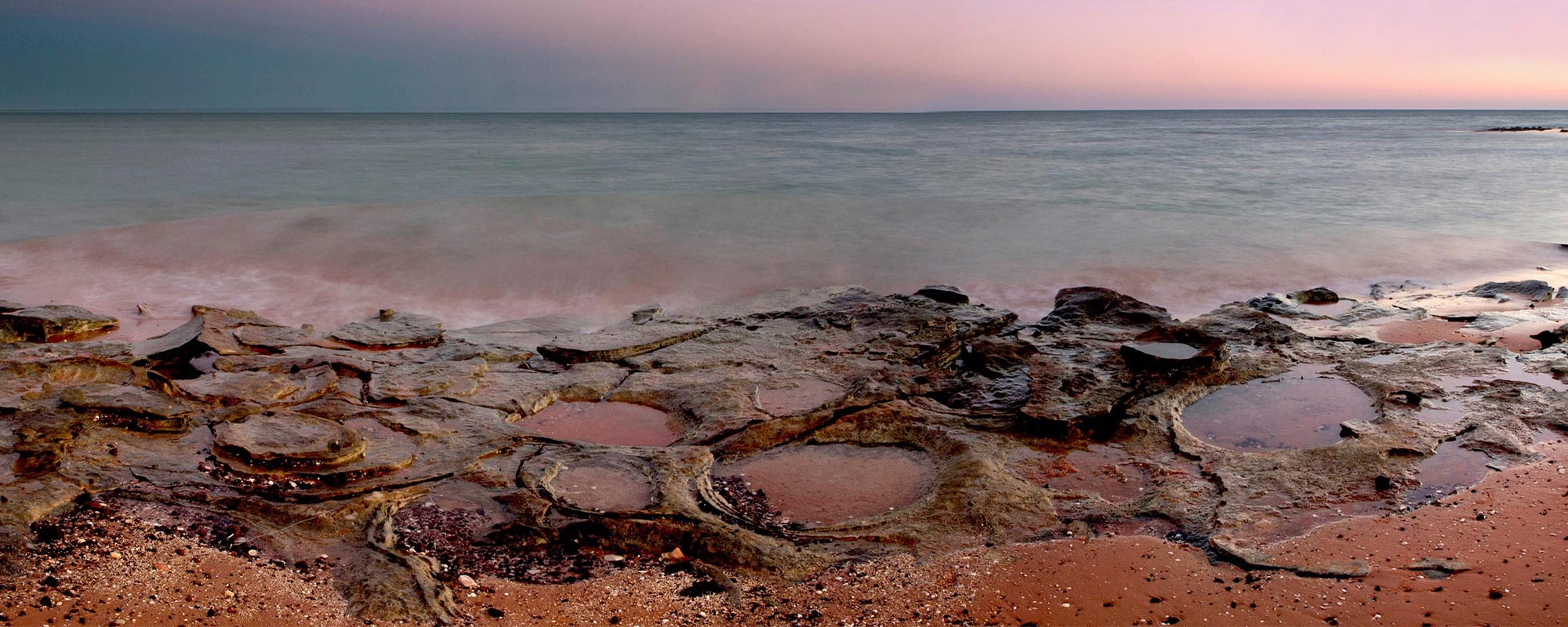
Community Survey
Participate in the community survey and have a say in the Dinosaur Coast National Heritage Management Plan.
Your input is important!
Palaeo Artist: Damir G Martin
Palaeontologist: Assoc Prof Steve Salisbury
Sauropods were gigantic, long-necked plant-eaters that moved on four legs. The ‘Broome’ sauropods are estimated to have measured 10 to 30+ metres in length, stood 3.2 to 5.5 metres high at the hip, and may have included some of the largest dinosaurs in the world.
Theropods were meat-eaters; they ran on two legs and had sharp claws and teeth to help them catch and devour their prey. The ‘Broome’ theropods are estimated to have measured 3.5 to 7 metres in length and stood 1.3 to 2 metres high at the hip when fully grown. While these tracks were first described by Western scientists in the late 1960s, they are well known to local indigenous people as the tracks of a Dreamtime creation being called Marala, the ‘Emu Man’.
Palaeo Artist: Damir G Martin
Palaeontologist: Assoc Prof Steve Salisbury
Thyreophorans were plant-eaters that also moved on four legs. The ones that left footprints at Walmadany measured 1 to 4+ metres at the hip and had an estimated length of 3.5 to 8.5 metres.
The ornithopods of Walmadany included small–medium-sized bipedal (two-legged) herbivores, as well as lumbering giants the size of a small bus. They are estimated to have measured 0.5 to 3+ metres high at the hips and varied in length from 2 to 8+ metres.
Theropods were meat-eaters, they stood on two legs and had sharp claws and teeth to help catch and devour their prey. The theropods of Walmadany are estimated to measure 3.5 to 7 metres in length and stood 0.8 to 2 metres high at the hip. While these theropod tracks were first described by Western scientists in 2017, they are well known to local indigenous people. Some of them are known as the tracks of a Dreamtime creation being called Marala, the ‘Emu Man’.